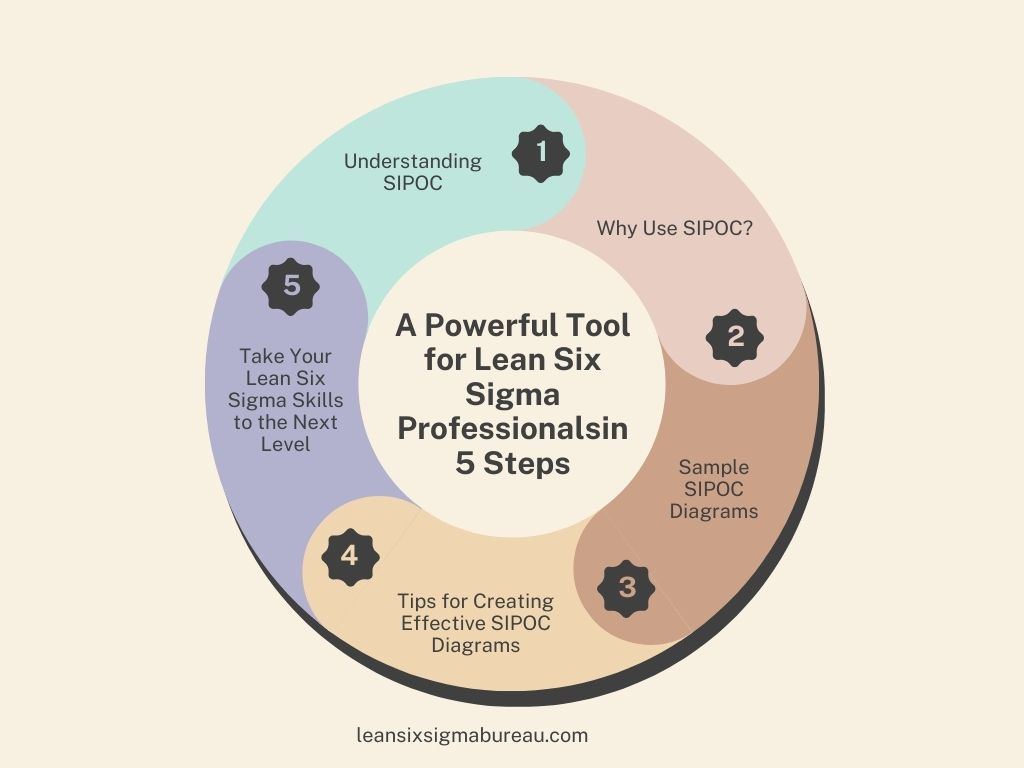Are you ready to take your Lean Six Sigma skills to the next level? Look no further than the SIPOC diagram! In this article, we’ll explore how this invaluable tool can streamline your projects, boost efficiency, and drive success.
Understanding SIPOC
SIPOC stands for Suppliers, Inputs, Process, Outputs, and Customers. It’s a high-level process map that provides a clear overview of a system or process, from start to finish. Think of it as a roadmap that guides you through the journey of your project, highlighting key stakeholders and crucial steps along the way.Why Use SIPOC?
- Clarity: SIPOC diagrams offer a bird’s-eye view of your process, making it easier to identify potential bottlenecks, inefficiencies, and areas for improvement.
- Communication: By clearly outlining the process and its stakeholders, SIPOC diagrams facilitate effective communication among team members, stakeholders, and leadership.
- Alignment: SIPOC diagrams help ensure that everyone involved in the project understands their role and how their contributions fit into the larger picture.
- Focus: With a clear understanding of the process, teams can prioritize efforts and resources where they will have the greatest impact, driving results faster.
- Continuous Improvement: SIPOC diagrams serve as a foundation for continuous improvement efforts, allowing teams to iterate and refine processes over time.
Sample SIPOC Diagrams
Let’s dive into a few examples to see how SIPOC diagrams can be applied in real-world scenarios:- Order Fulfillment Process: Suppliers might include vendors and manufacturers, inputs could be orders and raw materials, the process involves receiving, packaging, and shipping orders, outputs are completed orders, and customers are the end-users.
- Customer Service Process: Suppliers could be internal departments or external vendors providing support tools, inputs might include customer inquiries and issues, the process involves triaging, resolving, and following up on customer inquiries, outputs are satisfied customers, and customers are both external and internal stakeholders.
- Product Development Process: Suppliers could include R&D teams and suppliers of raw materials, inputs might include market research and customer feedback, the process involves ideation, prototyping, and testing, outputs are new products or features, and customers are end-users or clients.
Tips for Creating Effective SIPOC Diagrams
- Keep it Simple: Focus on the most critical elements of the process and avoid getting bogged down in unnecessary details.
- Involve Stakeholders: Collaborate with key stakeholders to ensure that your SIPOC diagram accurately reflects the reality of the process.
- Use Visuals: Utilize colors, shapes, and icons to make your SIPOC diagram visually appealing and easy to understand.
- Review and Iterate: Regularly review and update your SIPOC diagrams as processes evolve or new information becomes available.


